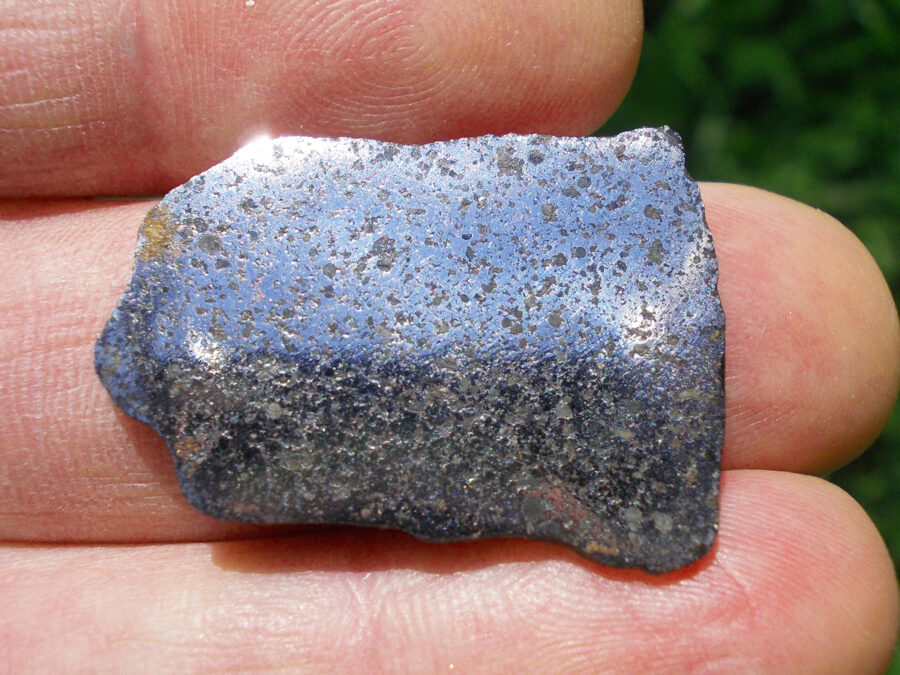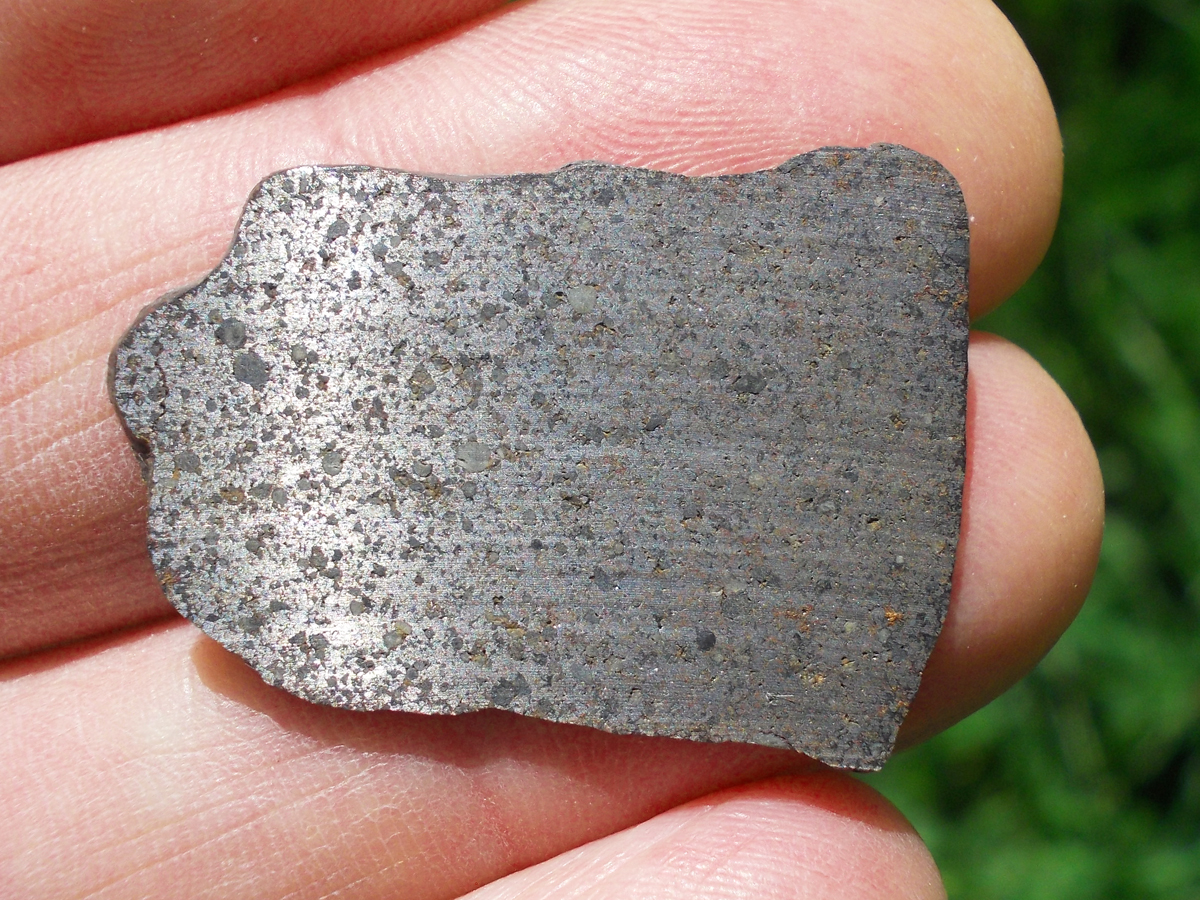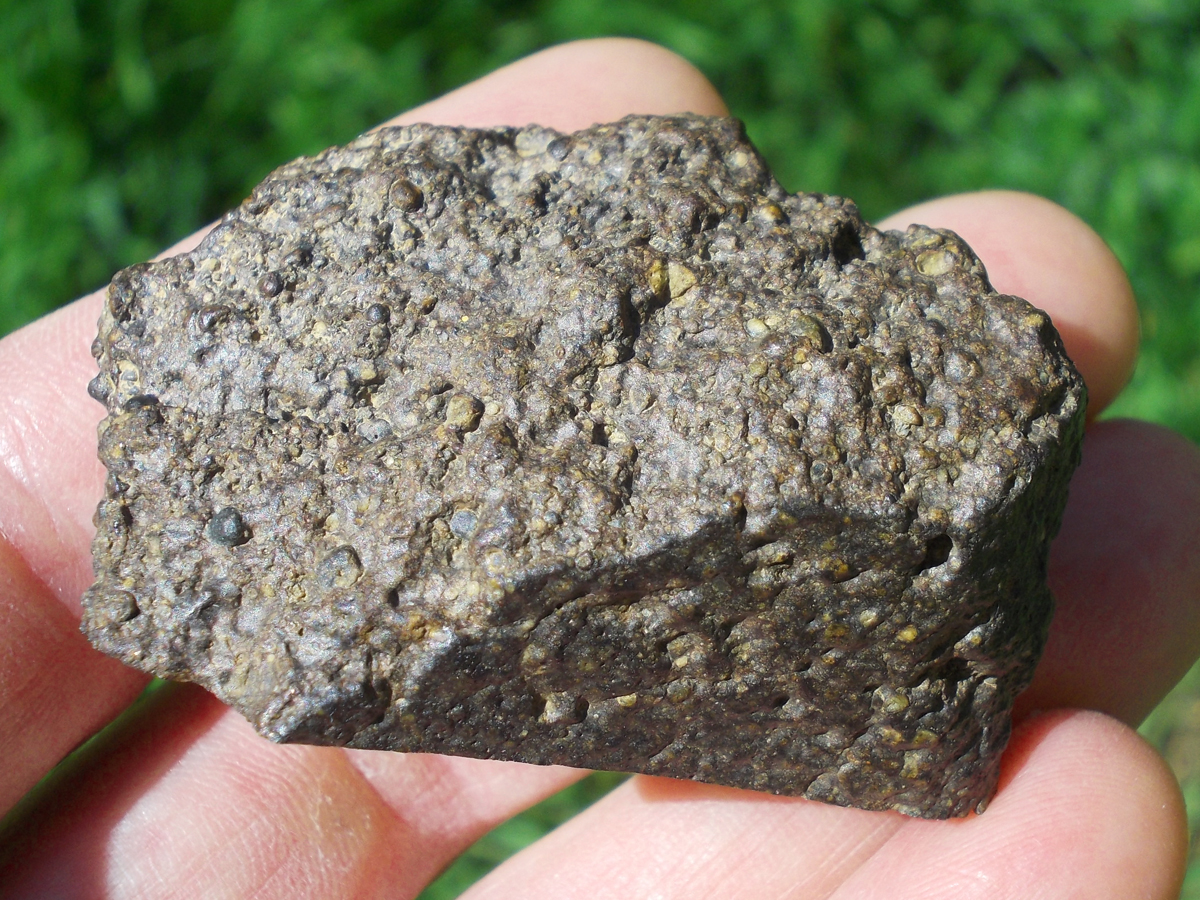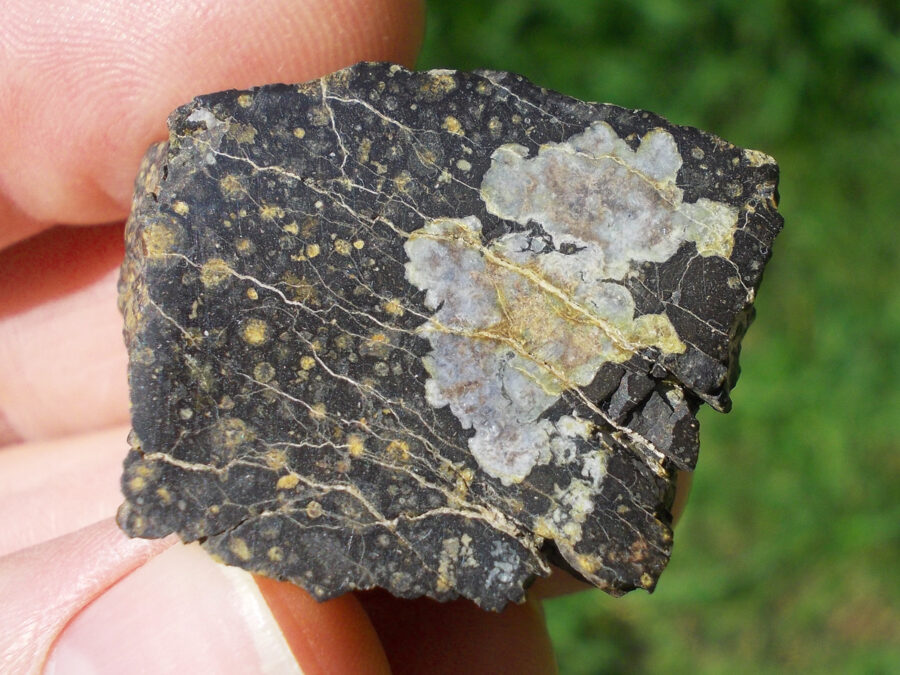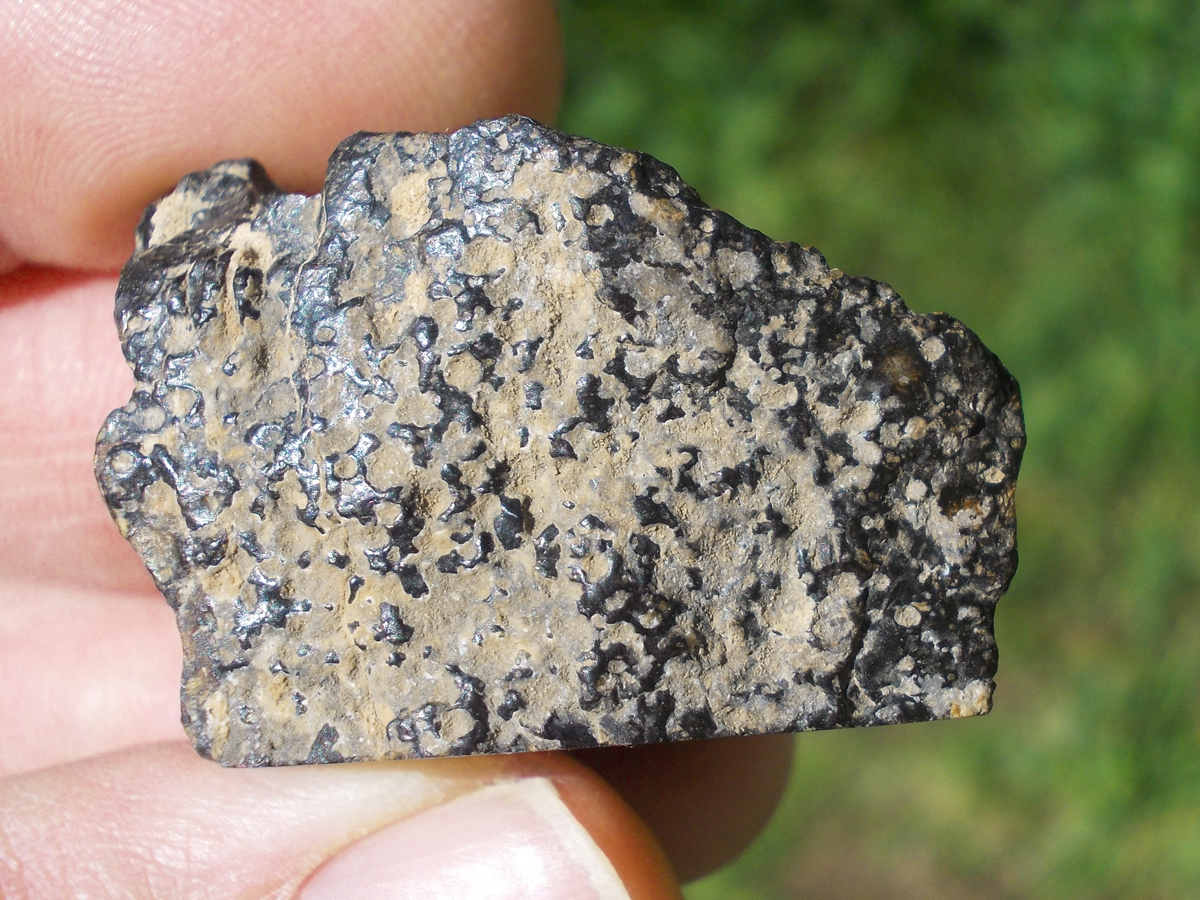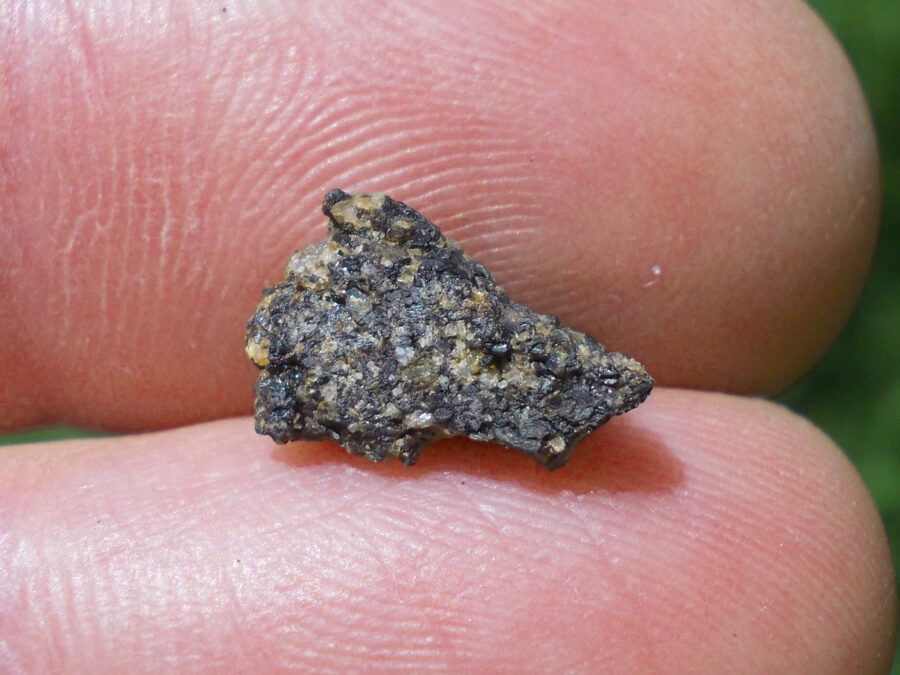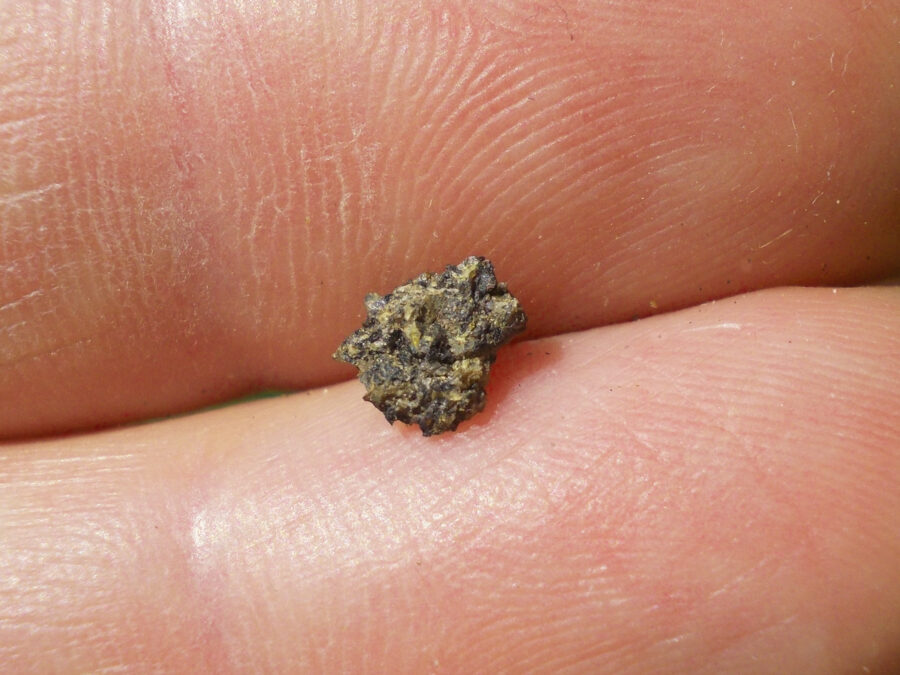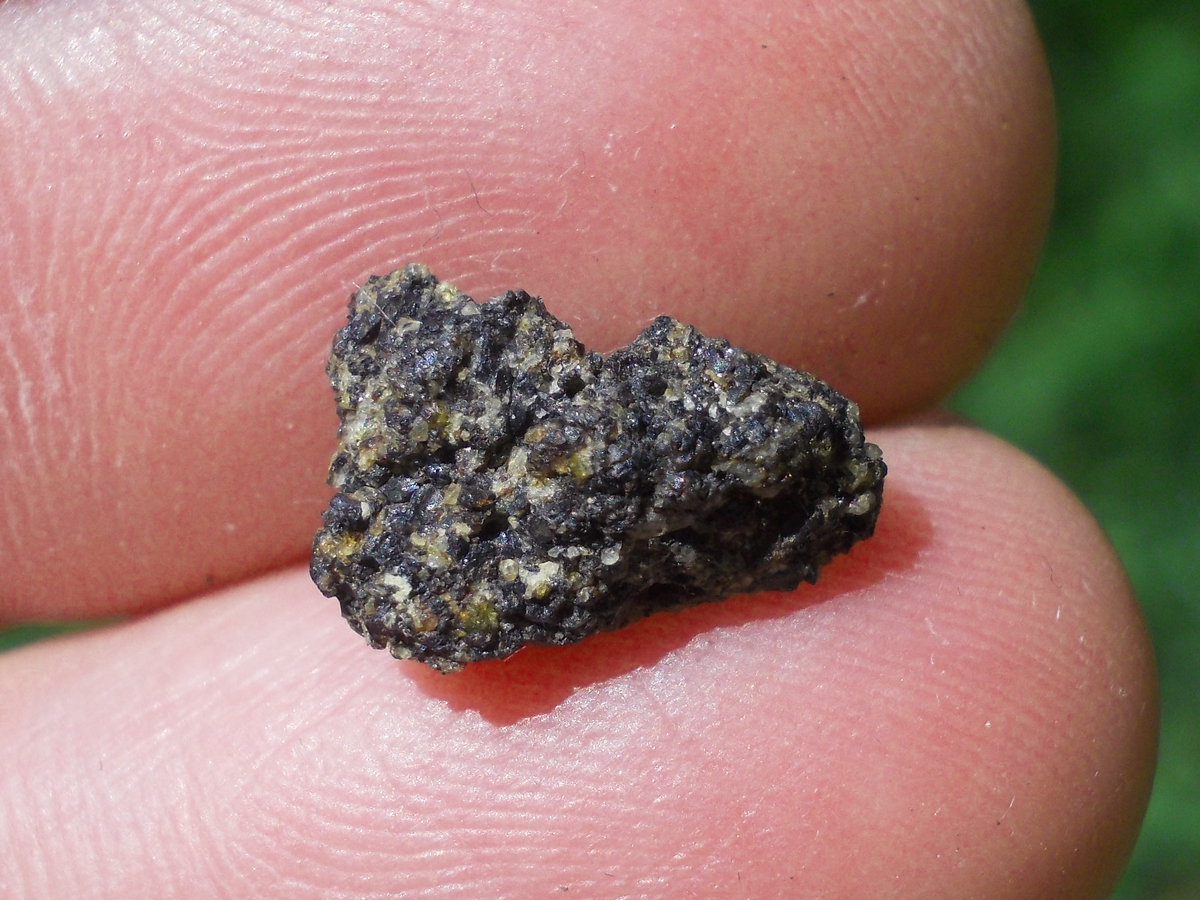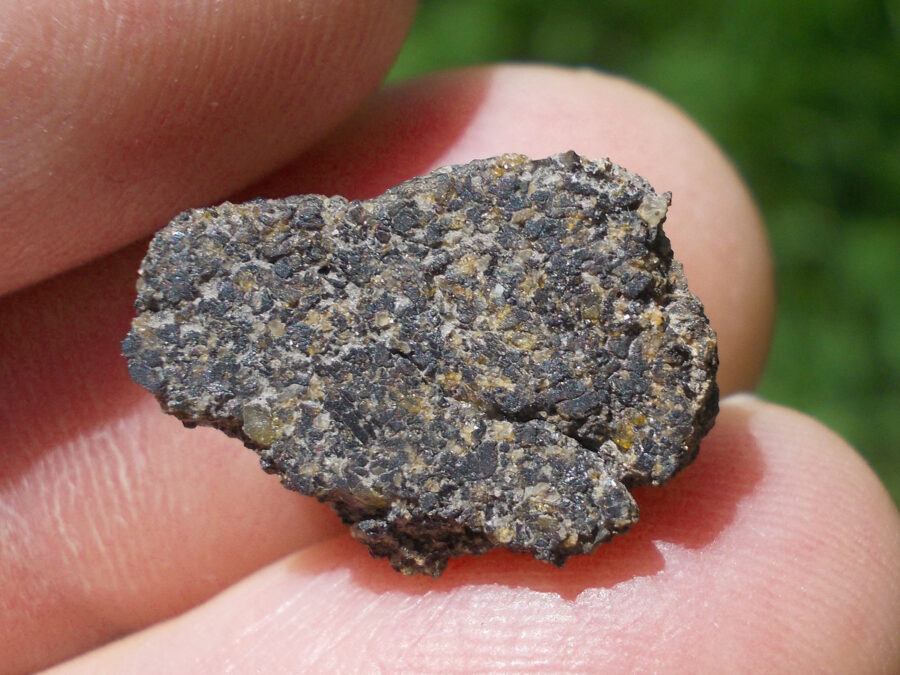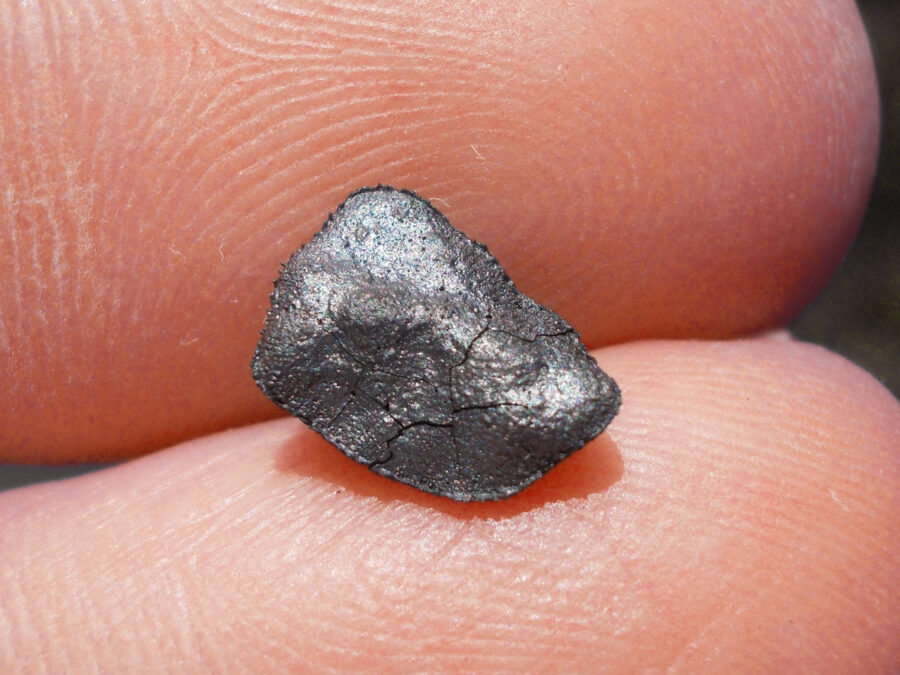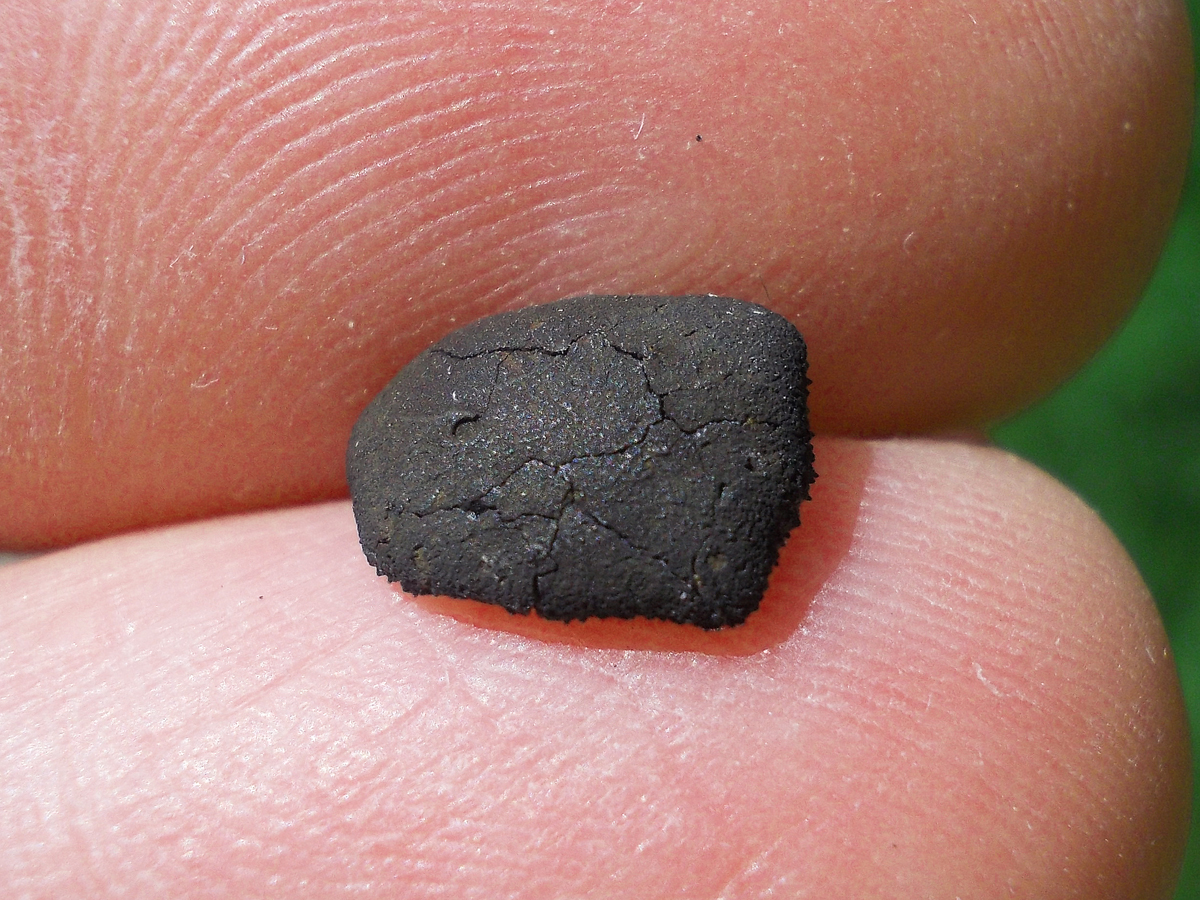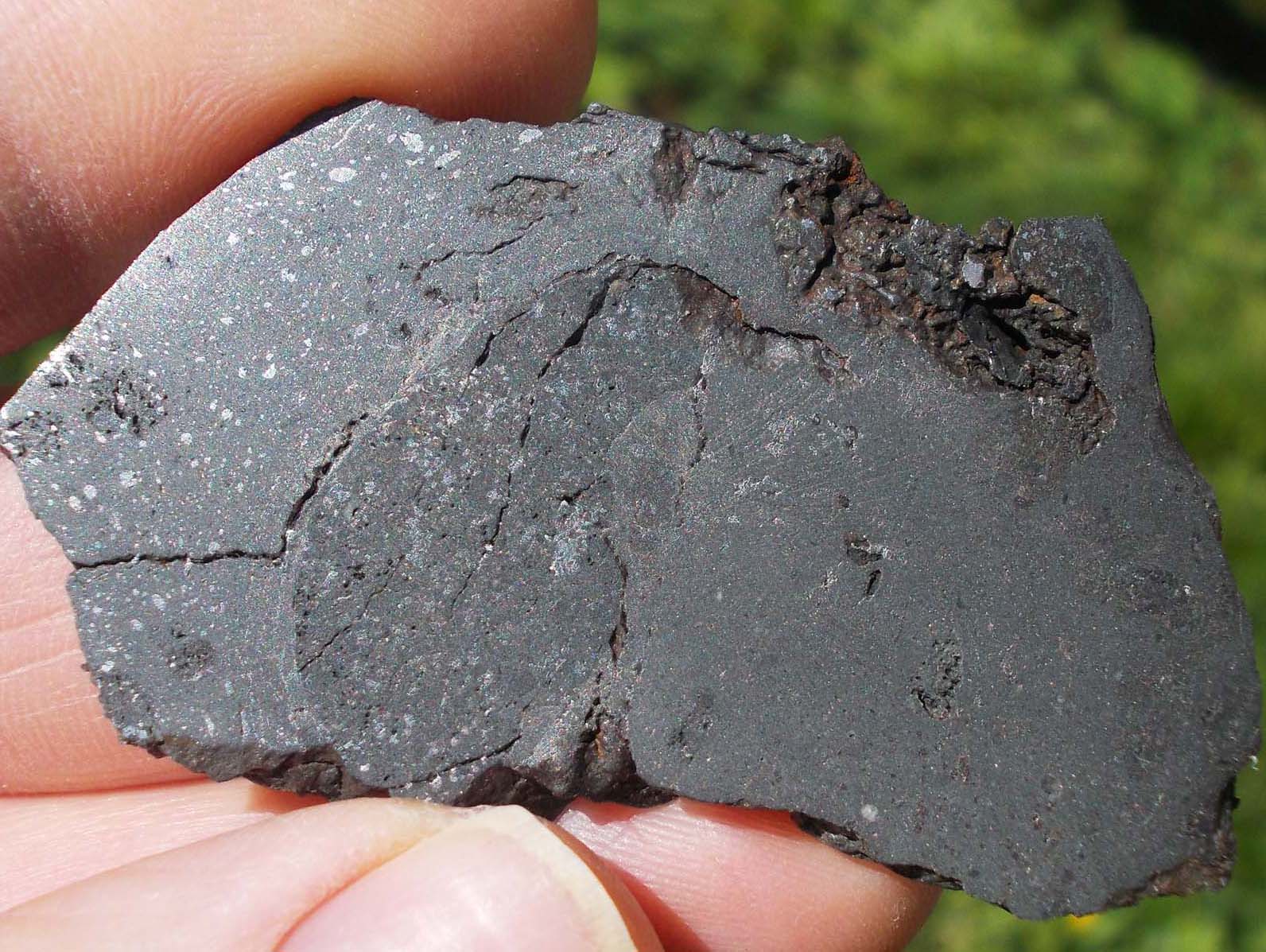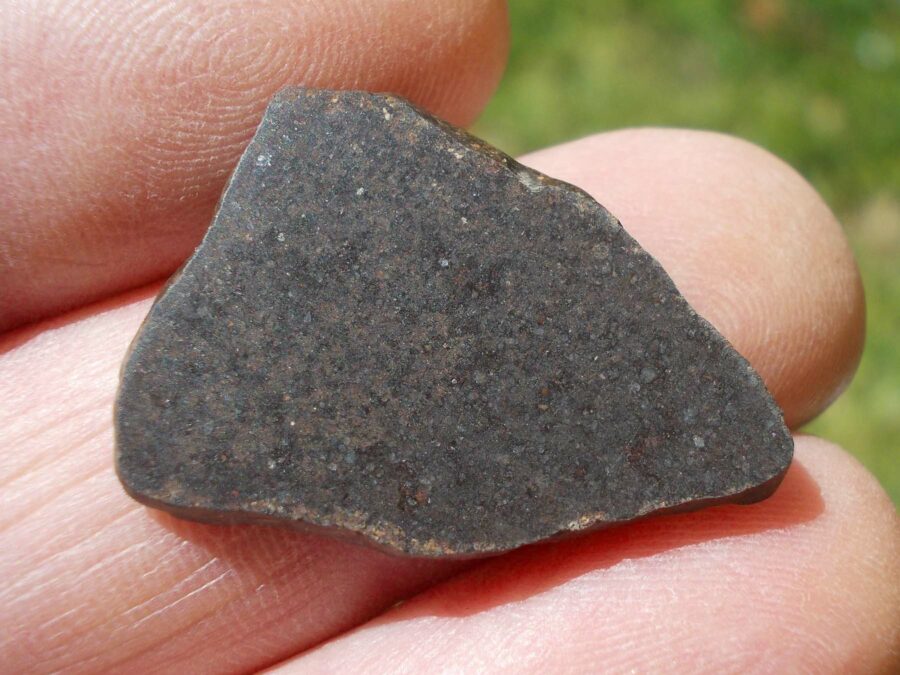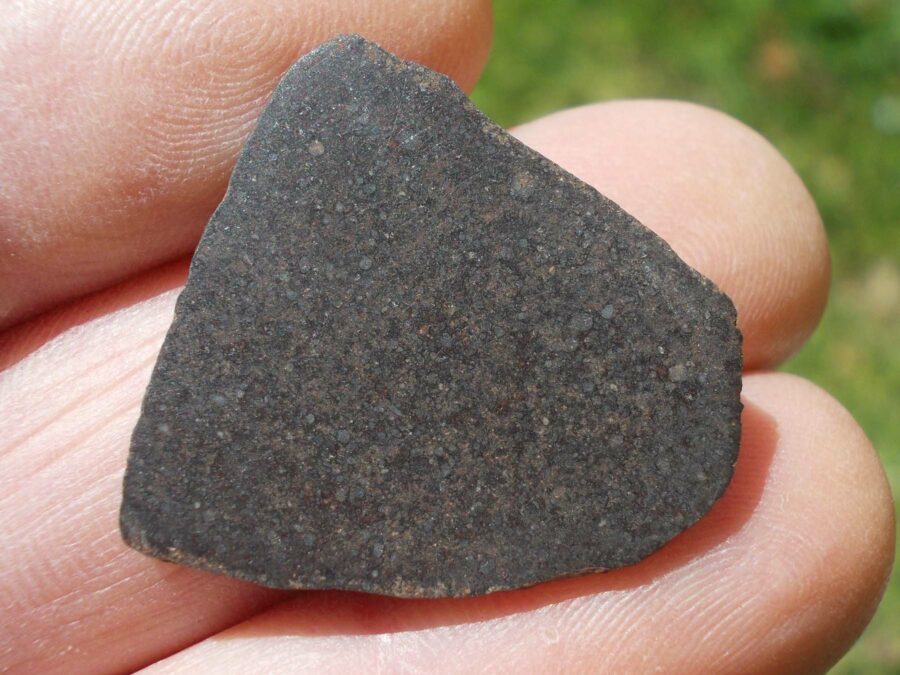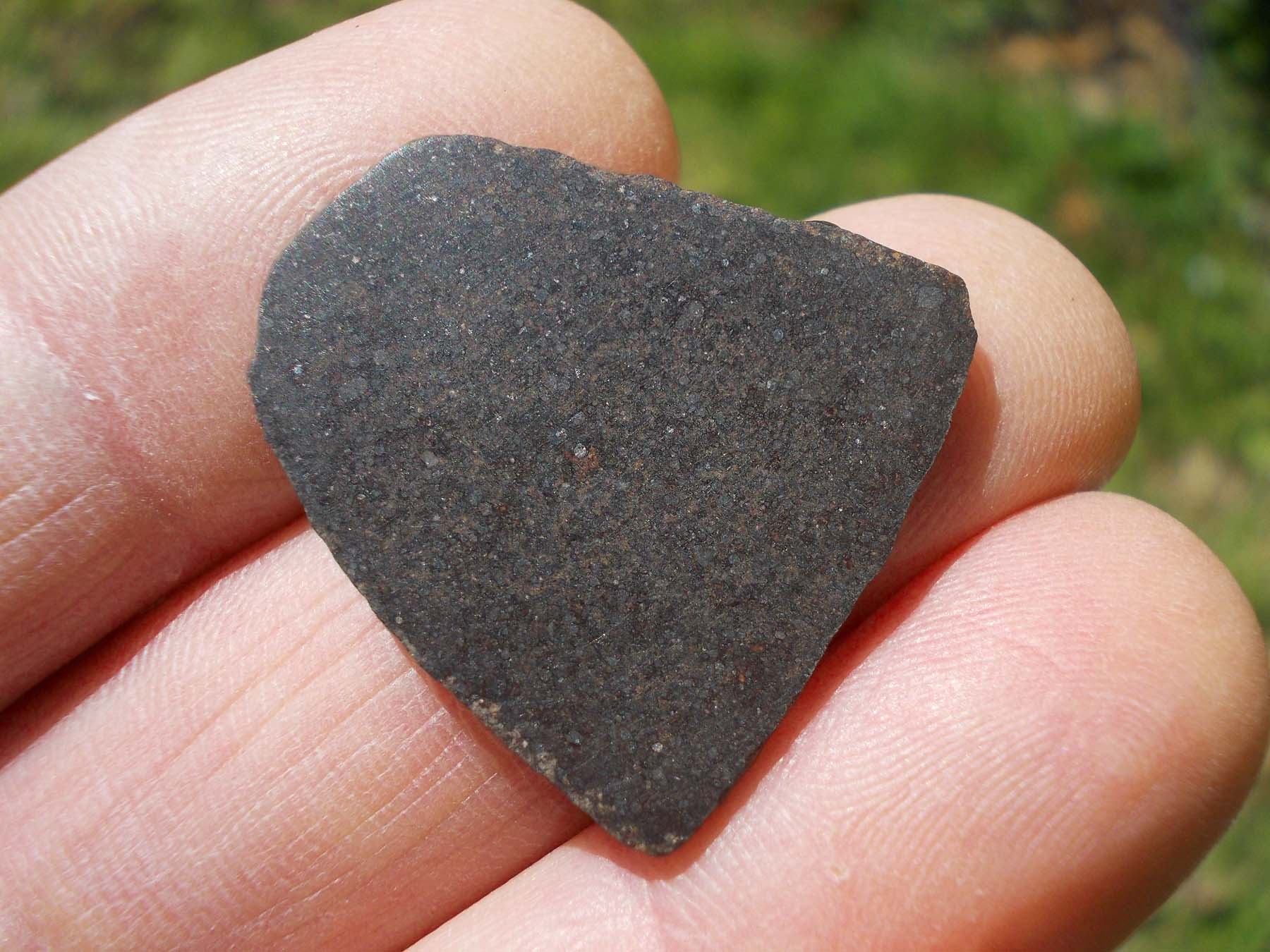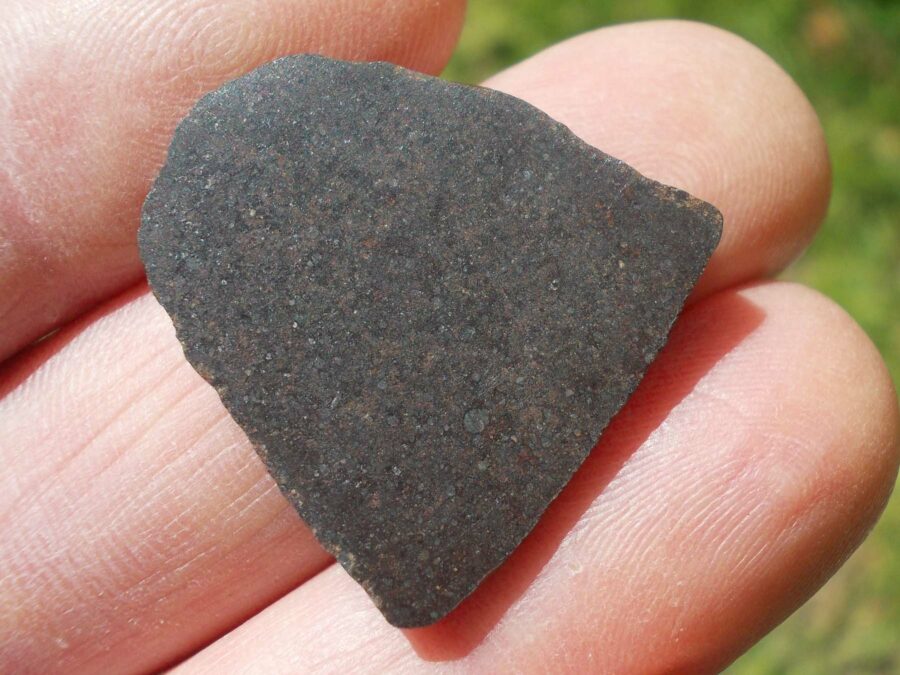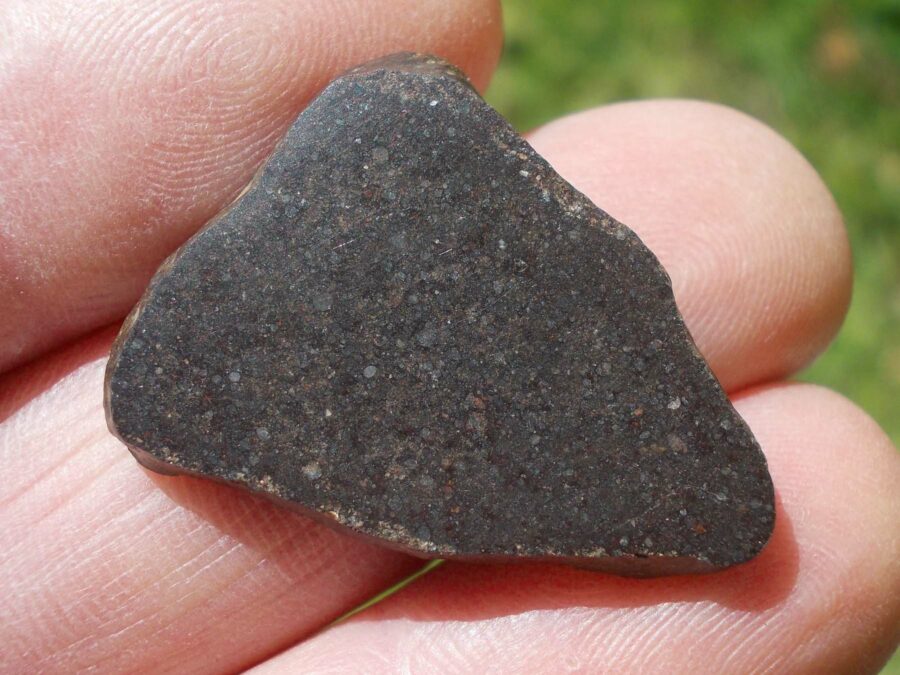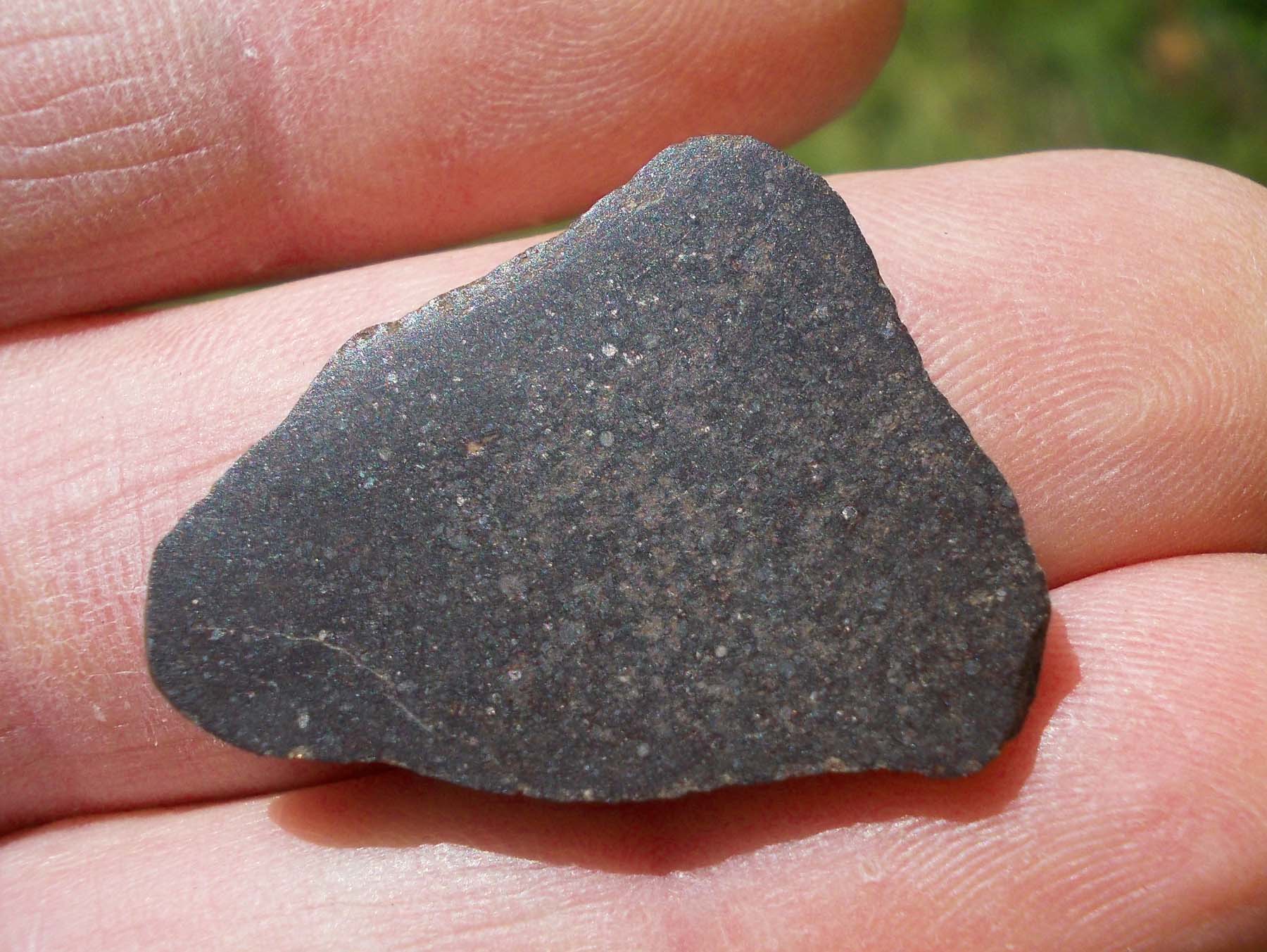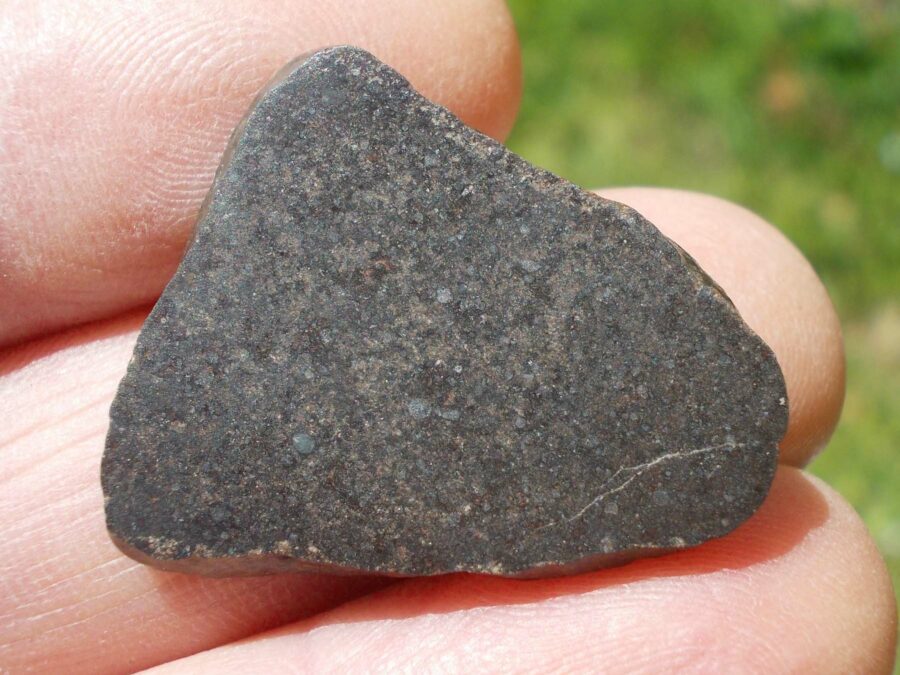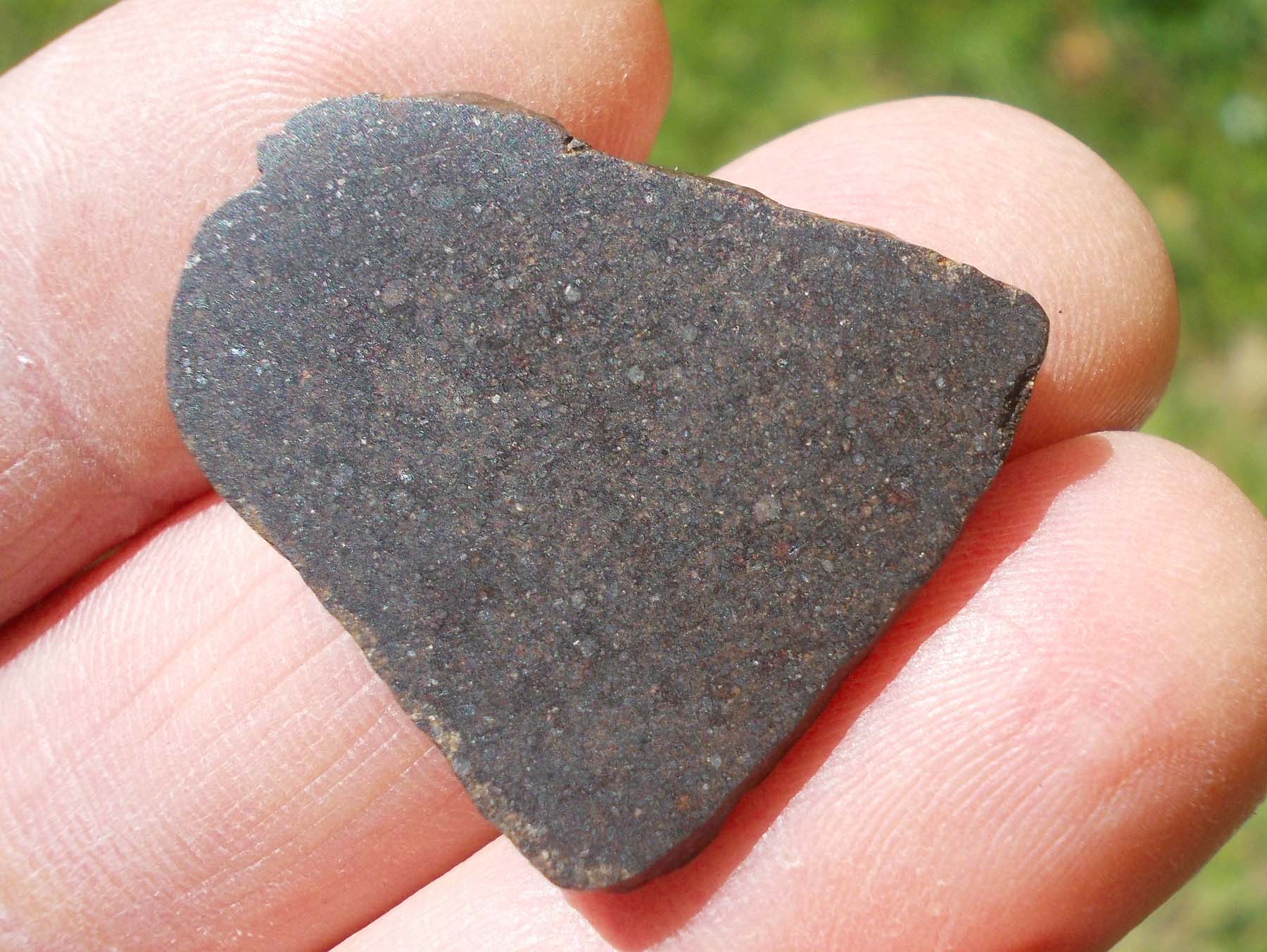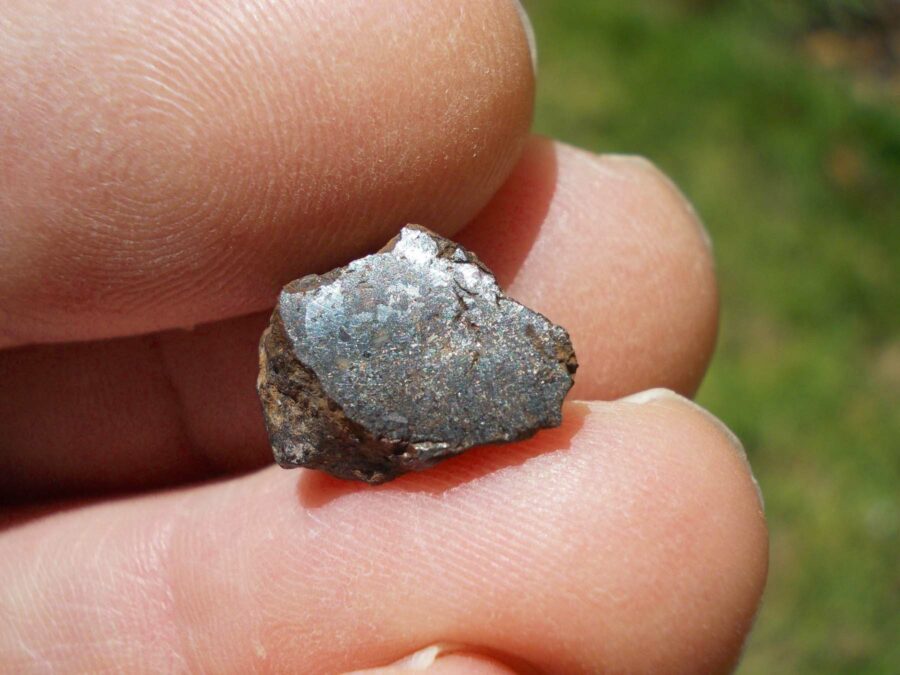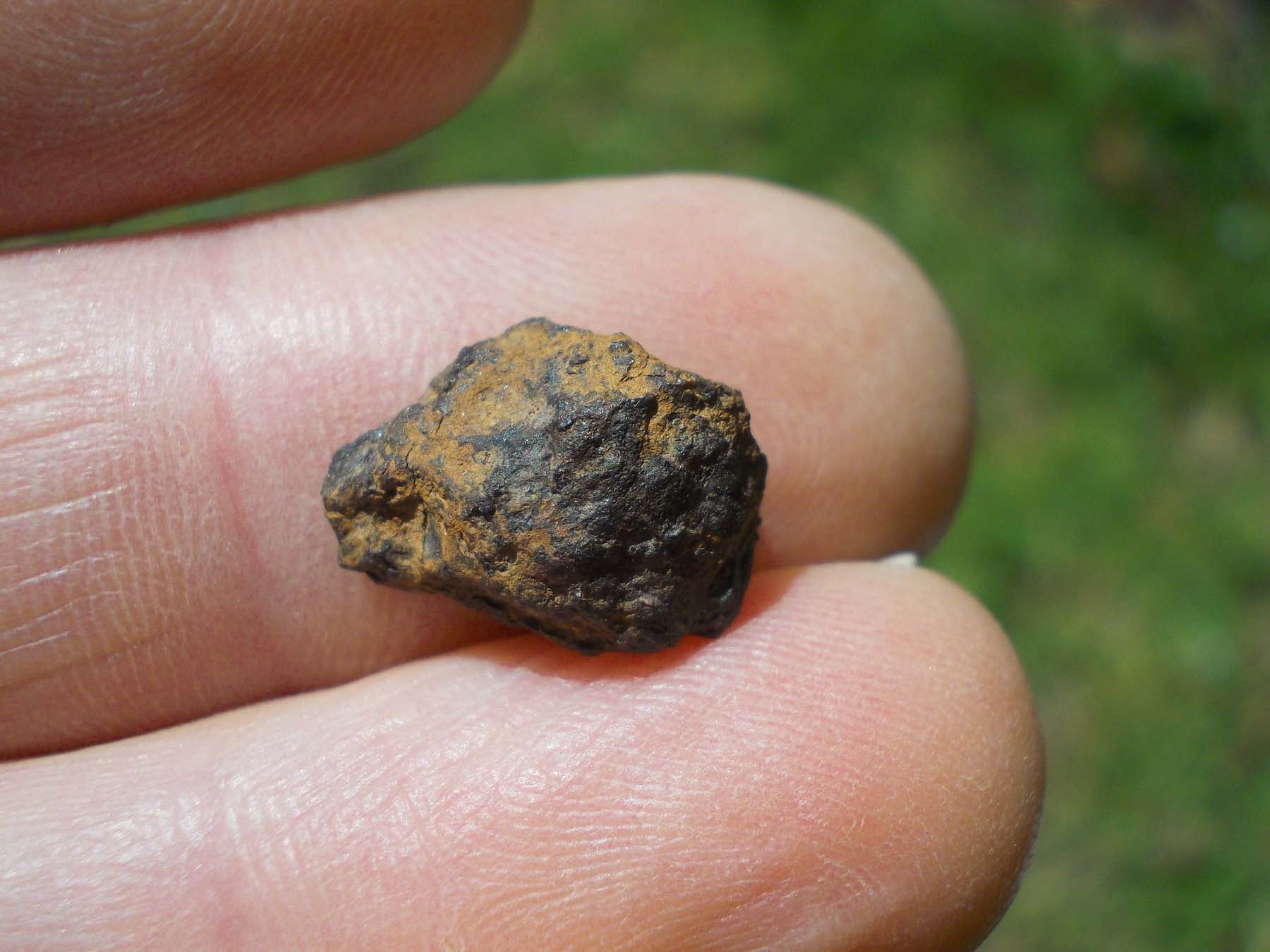NWA 13202 Chondrite Ung #1 – 4,13 g
653,96 $NWA 13202 is a very particular meteorite, it is classified as an ungrouped chondrite.
Visually it does not look like any chondrite because it is very rich in metal.
It is a unique meteorite !
Writeup from MB 109:
Northwest Africa 13202 (NWA 13202)
(Northwest Africa)
Purchased: 2020 Jan
Classification: Ungrouped chondrite
History: A very dense, metal-rich specimen, found as two naturally-broken pieces which fit together, was purchased in January 2020 by Mark Lyon from a dealer in Zagora, Morocco.
Physical characteristics: The broken surfaces on both pieces are coated by rusty terrestrial weathering products. Polished interior surfaces exhibit dominant fresh metal (with minimal staining) and subordinate interspersed silicate-rich regions.
Petrography: (A. Irving, UWS and J. Boesenberg, BrownU) The specimen consists of two distinct interspersed components with overall proportions of ~75% metal and ~25% silicate-rich material. Metal-rich regions (up to 0.5 mm) are composed of 95% kamacite with 5% taenite, and contain fine grained metal plates ranging from 100 to 500 μm in diameter. Silicate-rich regions (up to 0.5 mm) contain a variety of chondrules (with apparent diameters ranging from ~100 to 1500 μm). Most chondrules are glass-bearing (PP, PO, POP and barred pyroxene types) but some are cryptocrystalline. Accessory phases in silicate-rich regions include kamacite, taenite, chromite, troilite, merrillite and chlorapatite.
Geochemistry: Olivine (Fa24.6±3.9, range Fa15.5-28.0, N = 16), low-Ca pyroxene (Fs15.8±1.4Wo1.5±0.9, range Fs14.6-19.6Wo0.6-3.5, N = 11), pigeonite (Fs14.8-15.1Wo8.3-9.1, N = 2), kamacite (Ni = 4.8-7.0 wt.%, N = 7), taenite (Ni = 16.5-21.3 wt.%, N = 3).
Classification: Chondrite (ungrouped, metal-rich). Paired with NWA 12273 and NWA 12379.
Specimens: 20.0 g including one polished slice at UWB; remainder with Mr. M. Lyon.


